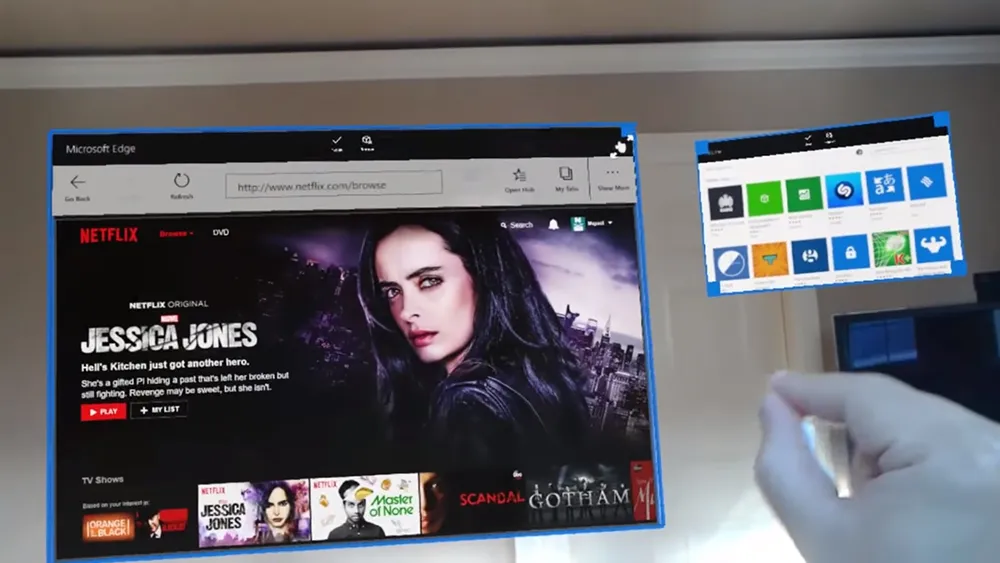A series of videos started hitting the web depicting a variety of HoloLens applications, like streaming Halo 5 onto a holographic screen and pulling up Netflix in a floating browser.
While depicting really cool uses for the hardware, I find myself confused about how the videos were made and how representative they are of the actual HoloLens experience. We know the field of view on the $3,000 developer kits is a fraction of what a Rift or Gear VR can provide. So while watching Netflix on a Gear VR in bed seemingly projected on a virtual ceiling is an experience that’s possible today for the cost of a $100 add-on to a Samsung phone, it’s unclear whether a similar experience can be had with a HoloLens despite the suggestion in this video, the far more expensive price tag and developer kit status of the hardware.
We reached out to Microsoft representatives to try and understand how these videos were made and whether HoloLens is using an outward facing camera (it certainly has a bunch of sensors facing outward) to film the surrounding environment. We received an indirect answer in the form of the following prepared statement:
Microsoft HoloLens engineers started posting some of their HoloLens experiences online as a part of our engagement with the developer community. The team is posting pictures and videos that were captured using HoloLens, showing the holograms they are seeing in their world through the device. This is called mixed reality capture (MRC), and is only possible today through HoloLens. While this activity wasn’t intended to launch or announce any specific features, we are showing just some of what could be possible in the world of holographic development..
One Twitter user describing himself as a graphics engineer linked to an impressive video depicting Halo 5 being played on a virtual screen embedded on the wall. He said this about the capture:
@hmltn it’s just a hololens, no custom hw or anything. Analogous to screencasting your PC or whatever.
— Sebastian Sylvan (@ssylvan) December 2, 2015
@hmltn It’s not shot through the lenses (since user is wearing it), but captured on regular device as it’s being used. Very representative. — Sebastian Sylvan (@ssylvan) December 2, 2015
Here’s the Halo streaming video:
Other videos, all tagged with the hashtag #madewithhololens, show adults blown away by the technology with children pretty indifferent because they can’t see the holograms.
Examples:
Holograms will have always existed in Hannah’s world. I’m proud to help make this technology real #MadeWithHoloLens pic.twitter.com/S1atqu0Dgr — Brad Sarsfield (@bradoop) December 1, 2015
This home video was #MadeWithHoloLens, and it’s one of the first of its kind to be released to the world! @HoloLenspic.twitter.com/cBh7UerwqZ — Noble Smith (@ShireWisdom) November 28, 2015




























